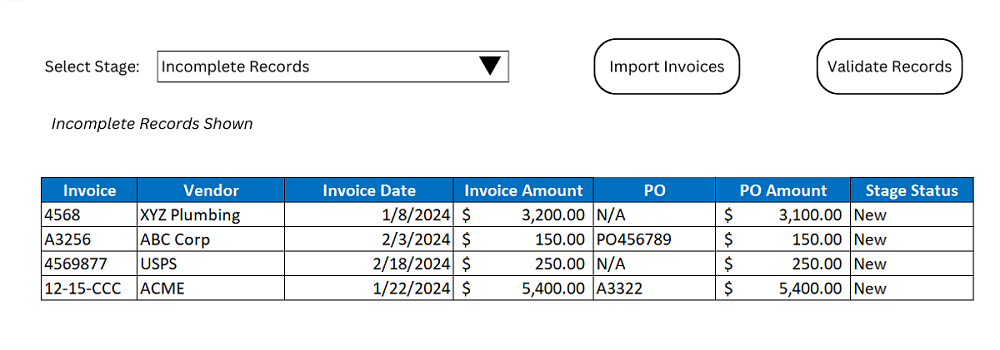Workflows and Data Integration
Last Updated 3/7/2024
INTRODUCTION
In the modern business landscape, efficiency is the name of the game. Companies are constantly seeking ways to streamline operations, minimize manual tasks, and extract actionable insights from vast amounts of data. At the heart of this quest for efficiency lies the integration of workflows and data - a strategic approach that not only accelerates processes but also enhances decision-making capabilities. In this article, we'll explore the significance of workflows and data integration, along with strategies for implementing them effectively.
UNDERSTANDING WORKFLOWS AND DATA INTEGRATION
Workflows are sequences of tasks or processes that are executed to achieve a specific goal within an organization. These tasks can range from simple to complex and often involve multiple departments, systems, and stakeholders. Workflows dictate how work moves through an organization, from initiation to completion, and play a crucial role in determining overall efficiency and productivity.
Data integration, on the other hand, involves the seamless exchange and consolidation of data across disparate systems, applications, and databases. It enables organizations to aggregate data from various sources, standardize formats, and create a single source of truth for decision-making purposes. Data integration ensures that information is accurate, consistent, and readily accessible to relevant stakeholders, regardless of where it originates.
THE INTERSECTION OF WORKFLOWS AND DATA INTEGRATION
The synergy between workflows and data integration is where the magic happens. By integrating workflows with data, organizations can automate repetitive tasks, eliminate manual data entry, and accelerate the pace of operations. This integration also enables real-time data synchronization, allowing stakeholders to make informed decisions based on up-to-date information.
For example, consider a sales workflow that involves lead generation, qualification, and conversion. By integrating this workflow with customer relationship management (CRM) software, sales teams can automatically capture leads, track interactions, and prioritize prospects based on predefined criteria. Simultaneously, data integration ensures that customer information is synchronized between the CRM system and other relevant databases, providing a comprehensive view of customer interactions and preferences.
STRATEGIES FOR EFFECTIVE IMPLEMENTATION
Implementing workflows and data integration requires careful planning, collaboration, and technical expertise. Here are some key strategies to consider:
- Identify Key Processes: Start by identifying critical business processes that would benefit from automation and data integration. Focus on processes that are repetitive, time-consuming, or prone to errors, as these are prime candidates for optimization.
- Map Workflows: Map out existing workflows to understand the sequence of tasks, dependencies, and data requirements. Identify potential points of integration where data can be exchanged between systems to streamline operations.
- Choose Integration Tools: Select integration tools and platforms that align with your organization's requirements and technical capabilities. Consider factors such as ease of use, scalability, and compatibility with existing systems.
- Standardize Data Formats: Establish data standards and protocols to ensure consistency and compatibility across integrated systems. Standardizing data formats facilitates seamless data exchange and reduces the risk of errors or discrepancies.
- Implement Automation: Leverage automation tools and technologies to orchestrate workflows and data integration processes. Automate routine tasks, such as data entry, validation, and synchronization, to free up time for more strategic activities.
- Monitor Performance: Continuously monitor the performance of integrated workflows and data integration processes. Track key metrics, such as processing time, error rates, and data accuracy, to identify areas for improvement and optimization.
Below is a representation of a workflow for accounts payable department:
Stages
Stages are distinct phases or checkpoints within a workflow that signify progress towards the ultimate goal. Each stage represents a milestone in the process, indicating the completion of specific tasks or the transition to the next phase of work. Stages provide clarity and structure, enabling teams to track progress and manage work effectively.

Figure 1. Stages Table
Stages Mapping
Next Stage table can be implemented to control records transition to next stage

Figure 2. Next Stage Diagram
Actions
Actions are the individual tasks or operations that occur within each stage of a workflow. These can include anything from data entry and document processing to approvals and notifications. Actions define the specific activities that need to be performed to move work forward within a workflow.

Figure 3. A/P Workflow Diagram
Server side automation
Triggers can be used to switch stages based on certain rules hard coded at trigger level. Below is a sample trigger for an A/P Workflow table named Invoice:
CREATE TRIGGER dbo.UpdateStage
ON dbo.Invoice
FOR UPDATE
AS
BEGIN
SET NOCOUNT ON
DECLARE @StageStatus varchar(20)
DECLARE @InvoiceID int
SET @StageStatus = COALESCE((SELECT STAGE_STATUS FROM deleted),'')
SET @InvoiceID = (SELECT INVOICE_ID FROM deleted)
IF @StageStatus = 'New'
BEGIN
IF (SELECT COUNT(*) FROM inserted WHERE [condition for review]) = 1
UPDATE dbo.INVOICE SET STAGE_STATUS = 'Review' WHERE INVOICE_ID = @InvoiceID
END
END
BENEFITS OF WORKFLOWS AND DATA INTEGRATION
The benefits of workflows and data integration extend far beyond operational efficiency. Some key advantages include:
- Improved Productivity: Automation of repetitive tasks frees up time for employees to focus on higher-value activities, such as innovation and customer engagement.
- Enhanced Decision-Making: Real-time data synchronization provides stakeholders with timely insights to make informed decisions and respond quickly to changing market conditions.
- Cost Savings: Streamlining workflows and data integration reduces manual effort, lowers operational costs, and minimizes the risk of errors or rework.
- Scalability: Integrated workflows and data integration processes are scalable, allowing organizations to adapt to evolving business needs and accommodate growth.
CONCLUSION
In today's fast-paced business environment, organizations must leverage the power of workflows and data integration to stay competitive and agile. By aligning workflows with data integration, businesses can automate processes, accelerate operations, and unlock valuable insights from their data. With careful planning, strategic implementation, and ongoing optimization, workflows and data integration can drive efficiency, innovation, and growth across the organization.